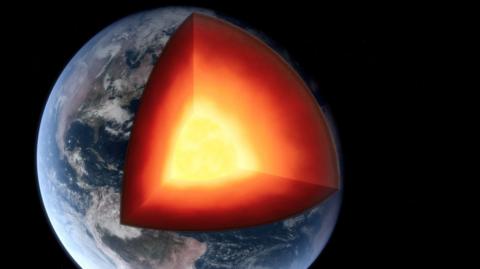But his team also found the evidence of the inner core's changing shape.
It appears to be happening at the boundary of the inner and outer core, where the inner core is close to melting point. The liquid flow of the outer core as well as pull from an uneven gravity field may cause deformation.
Prof Hrvoje Tkalcic from Australian National University, who was not involved in the study, said the paper provides "an interesting concept that should be explored further".
He said it could allow scientists "to make more informed estimates of some important material properties, such as the viscosity of the inner core, which is one of the least known quantities in modern science".
Over time the liquid outer core is freezing into the solid inner core, but it will be billions of years before it becomes completely solid.
It would almost certainly mean the end of life on Earth, but by then the planet is already likely to have been swallowed by the Sun.
Prof Vidale's work is part of investigations by experts around the world exploring and arguing over what happens in the core.
"In science, we generally try to look at things until we understand them," Prof Vidale says.
"In all likelihood, this finding doesn't affect our daily lives one iota, but we really want to understand what's happening in the middle of the Earth," he adds.
It is possible that the changes are connected to changes in Earth's magnetic field.
"The magnetic field has had jerks at various times in the past few decades, and we'd like to know if that is related to what we're seeing at the inner core boundary," he said.
Prof Vidale urged caution about hyping the findings into ideas that the core is going to stop rotating any time soon.
He also added that there are still lots of uncertainties.
"We're not 100% sure we're interpreting these changes correctly," saying that the boundaries of scientific knowledge are always changing and, like many if not all researchers, he has been wrong in the past.

